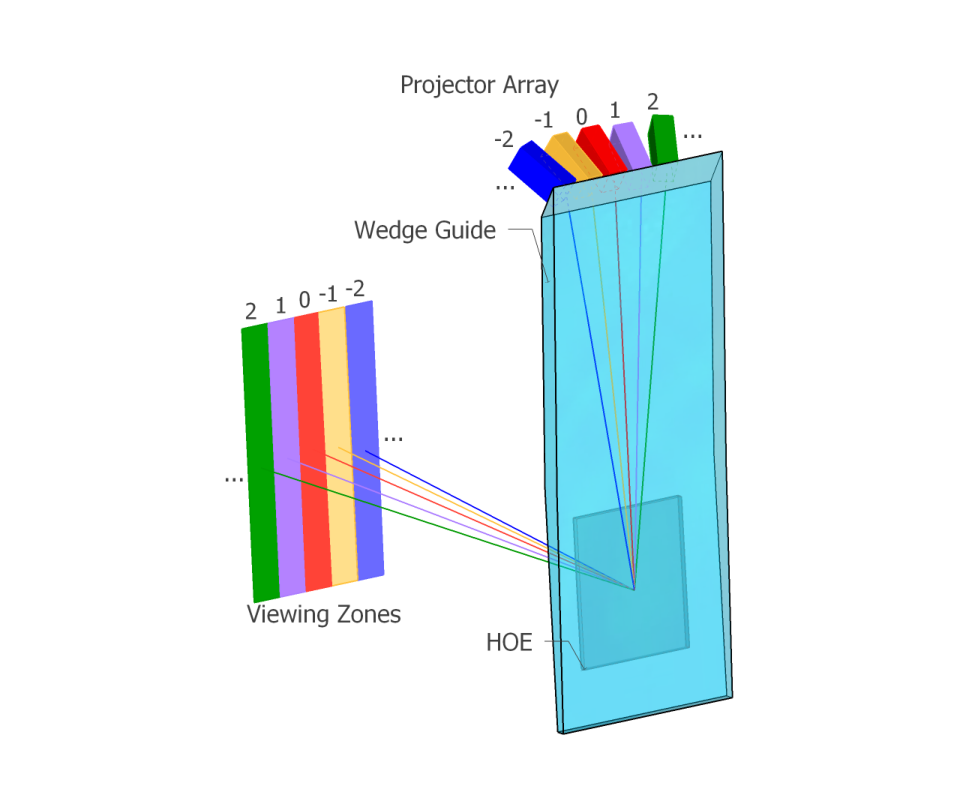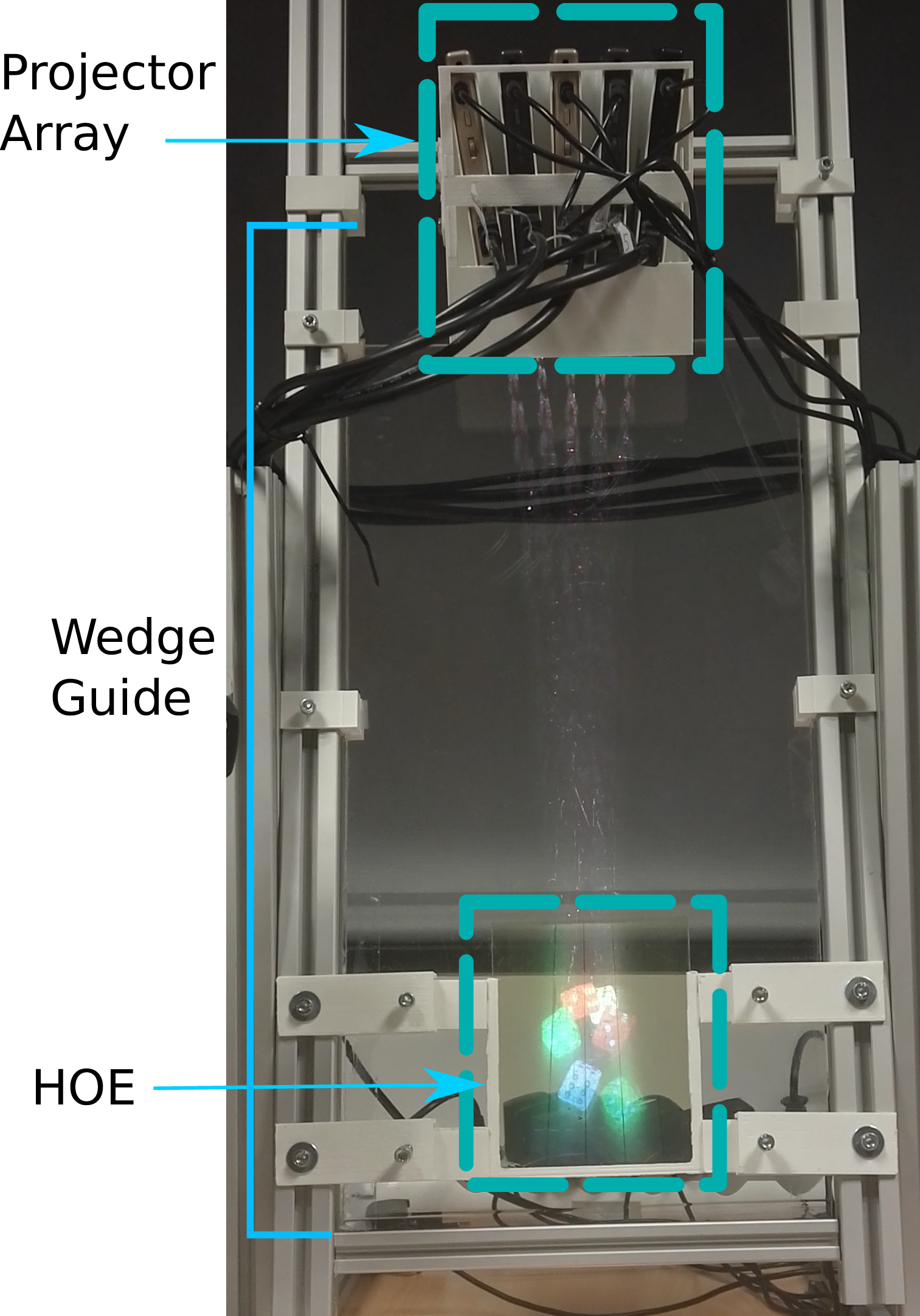Section: New Results
From Acquisition to Display
|
Autostereoscopic transparent display using a wedge light guide and a holographic optical element
We designed and developed a novel transparent autostereoscopic display consisting of laser picoprojectors, a wedge light guide, and a custom holographic optical element (HOE). Such a display can superimpose 3D data on the real world without any wearable.
The principle of our display, as depicted in Figure 9, is to couple beams from multiple laser beam steering picoprojectors into a transparent wedge guide and then to redirect each beam to separate viewing zones using a transparent HOE. The HOE is wavelength-multiplexed for full-color efficiency, but only one angular grating is recorded and multiple viewing zones are reconstructed with several projector positions due to the high angular bandwidth. Our current prototype has 5 views but is theoretically able to generate 9 views. The views are located 50cm in front of the display, they are 3cm wide and 10cm high. These values are fixed once the HOE is recorded; they result from our choices and can be changed in the recording step.
This display has great potential for augmented reality applications such as augmented exhibitions in museums or shops, head-up displays for vehicles or aeronautics, and industrial maintenance, among others.
Wedge cameras for minimally invasive archaeology
Publication: [9]
Acquiring images of archaeological artifacts is an essential step for the study and preservation of cultural heritage. In constrained environments, traditional acquisition techniques may fail or be too invasive. We present an optical device including a camera and a wedge waveguide that is optimized for imaging within confined spaces in archeology. The major idea is to redirect light by total internal reflection to circumvent the lack of room, and to compute the final image from the raw data. We tested various applications onsite during an archaeological mission in Medamoud (Egypt). Our device was able to successfully record images of the underground from slim trenches, including underwater trenches, and between rocks composing a wall temple. Experts agreed that the acquired images were good enough to get useful information that cannot be obtained as easily with traditional techniques.
Study of contrast variations with depth in focused plenoptic cameras
Publication: [10]
A focused plenoptic camera has the ability to record and separate spatial and directional information of the incoming light. Combined with the appropriate algorithm, a 3D scene could be reconstructed from a single acquisition, over a depth range called plenoptic depth-of-field. We have studied the contrast variations with depth as a way to assess plenoptic depth-of-field. We take into account the impact of diffraction, defocus, and magnification on the resulting contrast. We measure the contrast directly on both simulated and acquired images. We demonstrate the importance of diffraction and magnification in the final contrast. Contrary to classical optics, the maximum of contrast is not centered around the main object plane, but around a shifted position, with a fast and nonsymmetric decrease of contrast.
Unifying the refocusing algorithms and parameterizations for traditional and focused plenoptic cameras [16]
Publication: [16]
We propose a unique parameterization of the light rays in a plenoptic setup, allowing the development of a unique refocusing algorithm valid for any plenoptic configurations, based on this parameterization. With this method we aim at refocusing images at any distances from the camera, without previous discontinuity due to change of optical configuration. We aim to obtain reconstructed images visually similar to the results of the other algorithms, but quantitatively more accurate.





